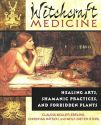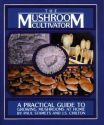In The Mind in the Cave: Consciousness and the Origins of Art, Lewis-Williams draws on his own previous work, and also that of cognitive psychologists like Heinrich Klüver and Ronald Siegel and anthropologists like Gerardo Reichel-Dolmatoff, who have cumulatively demonstrated that, in altered states, the same visual and sensory phenomena are generated both in the lab and in the field. [ read more ]
Bringing Yoga to Life: The Everyday Practice of Enlightened Living is not a book about Yoga poses or how to achieve the perfect body. It is exactly what the title describes, a work on utilizing Yoga daily to learn who we are as individuals. Chapter by chapter, Farhi show us how we can cope with living in the word as part of the collective. It doesn’t matter how you start Yoga or why, but do it and see where it leads you on the path to self-awareness and acceptance of others. [ read more ]
In Psychedelic Horizons, Dr. Tom Roberts sums up his fascination with psychoactives in the following words: “As an educational psychologist, I am grateful to psychedelics for teaching me that our minds function in many mindbody states.” The exploration of the concept of different mindbody states is one of the more intriguing theories in Dr. Roberts’ book. [ read more ]
In Shroom, Andy Letcher has cut through this dense tangle of pseudohistory and urban legend with bracing scepticism, clearing the space for an elegant and authoritative telling of the true story that it conceals. He establishes that although fungi have fascinated, inspired and revolted us throughout history, and one source of this fascination has certainly been their strange intoxicating properties, there are only two parts of the world – Mexico and Siberia – where there is clear evidence that these properties have been deliberately sought out and culturally sanctioned. [ read more ]
2012: The Return of Quetzalcoatl alternates frequently between first-person accounts and third-person reporting, but throughout, Pinchbeck’s tone remains conversational. Events from his personal life unify the text, allowing the reader direct access to Pinchbeck’s motivations and the seeds of his hypotheses. [ read more ]
To honor her apprenticeship with various smoking mixtures, Ross wrote this charming, curious little book, which combines a “mix” of personal reflections, aphorisms, recipes, quotations, and practical data on around 150 seeds, flowers, roots, and plants that Native Americans have huffed and that you can too… [ read more ]
...an excellent book for those interested in the social, political, ethical, spiritual and historical aspects of the religious use of entheogens. Edited by Robert Forte, this collection includes essays, interviews and transcripts of speaking engagements from various authors with differing areas of expertise approaches the topic of the religious use of entheogens. [ read more ]
Claudia Müller-Ebeling’s contributions are the highlights of the book. Based on works of artists living in early modern times (e.g. Albrecht Dürer, Hans Baldung Grien) she presents the image of the witch as seen by these artists or their patrons. However, one cannot say if living “examples” of this image have ever really existed. (Klapp) ...Klapp finds the book useless at filling the casual gaps in his personal knowledge. But hopefully the more important and justifiable objections of Klapp’s nitpicking do no harm to all those healing magical words. (Holbein) [ read more ]
Wilson draws upon a variety of disciplines to tease the “Soma” out the Irish Celtic past. Anthropology, mythology, entheogen studies, comparative religion, linguistics and etymology, and other approaches are employed. He presents his theme as a reasonable suspicion, one that may lead to further evidence if experts in various fields should be inspired by his research. Writing on a more mythopoetic level, Wilson gives us a fascinating perspective on Soma as a tertium quid, a third dimension or reconciliation of a number of dichotomies… [ read more ]
If you were to buy only one book on mushroom cultivation, this would be it. Armed with The Mushroom Cultivator, absolute beginners will not need any other book, as Chilton and Stamets provide all that the reader needs to know from the beginning to the end of the mushroom-growing process. Although psilocybian mushrooms are included, these are neither the exclusive nor main focus of the book. For the most part, the authors focus on legal edible mushrooms that can be grown openly in the home or yard.
[ read more ]











